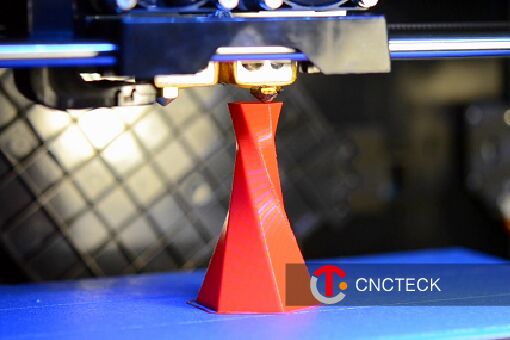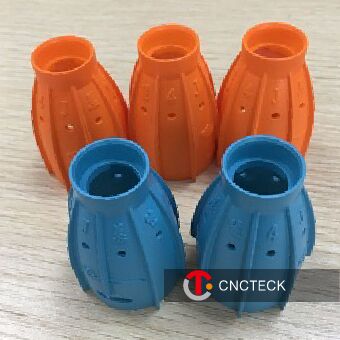3D Printing Service
If you need online 3D printing we are one of the most capable and affordable sources and we can get the job done right. We use state-of-the-art machines and diligently follow all design specifications. We continually strive to improve and optimize our processes and maximize customer convenience. Our customers range from inventors to businesses to government agencies. We are focused on quality and customer service.

How 3D printing works
3D printing developed as an outgrowth of liquid photopolymer research, a class of plastics that solidify under
high intensity ultraviolet laser light. Early 3D printing methods were SLA’s or stereolithography. Fused Deposition Modeling (FDM) is a newer approach that opened up a wider range of materials including polycarbonates, ABS plastics, PA, and others. CNCTECK offers FDM Fused Deposition Modeling which uses a heated nozzle to extrude plastic onto a work piece. In this manufacturing process fused plastic is deposited layer by layer according to the 3D model.
Advantages
3D printing, also known as rapid prototyping, typically produces low quantities of parts without tooling so that fast turnaround and low cost is possible. 3D printing allows engineers, designers, managers and end users to check designs for usability, appearance, manufacturability, fit, function, etc., prior to committing to conventional manufacturing. 3D printing speeds the design cycle.

Shapes
Almost any 2D or 3D shape can be made including shapes that cannot be made using conventional machining.
Examples of a few applications include: Enclosures, Brackets, Toy parts, Mechanisms, Shape models, etc.
Cost reduction
Ways to reduce cost include: reducing the weight of the final part and using proper part orientation.
For example building a cup oriented in the normal way is more economical that building a cup oriented upside down.
3D Printing Design Considerations
The following applies to CNCTECK 3D printing:
· Parts must stay within these size parameters: 650 x 350 x 550 mm | 230 x 180 x 320 mm | 200 x 150 x 150 mm
· Walls must be thicker than 0.7 mm.
· Large holes or cutouts in side views can be problematic.
· Keep embossed and engraved details above 0.2 mm high & wide.
· Material will be slightly porous and therefore is not appropriate for containers of gases or liquids.
· Clearance between part features must be greater than 0.5 mm.
Get Your 3D Printing Project Started Today
Our team can offer you a comparison between metal 3D printing and conventional machining in those cases where both may be viable options. You’ll be able to assess not only cost differentials but potential advantages in performance, weight reduction and turnaround times for your projects, Contact us for your free quote and design review today.

